So you’re planning to go on a backpacking trip but are a little unsure of what gear to bring, how to prepare, and how to actually, you know, get up that mountain.
Trust me when I say that you’re about to embark on a wonderful adventure that can open so much more of the world to you.
There are so many mind-blowingly beautiful places on the planet where a car can’t take you, and hiking (or trekking, or backpacking, or whatever you want to call it) is the only way to see them. Take the glaciers in Patagonia, for example, or Iceland’s Fimmvörðuháls hike.
Surviving a multiday backpacking adventure isn’t about being the fittest person on the trail. It’s not about being the most experienced, either. It’s about willpower, endurance, and most important of all, enjoyment.
So don’t worry if this is your first time backpacking and carrying gear, because, with the right preparation, you can do it! Everyone was a first-timer at some point, right?
From a girl who has done it all, from one-day to 14-day treks, these are my best backpacking tips for beginners. This includes what gear to pack and how to prep!
What to Wear
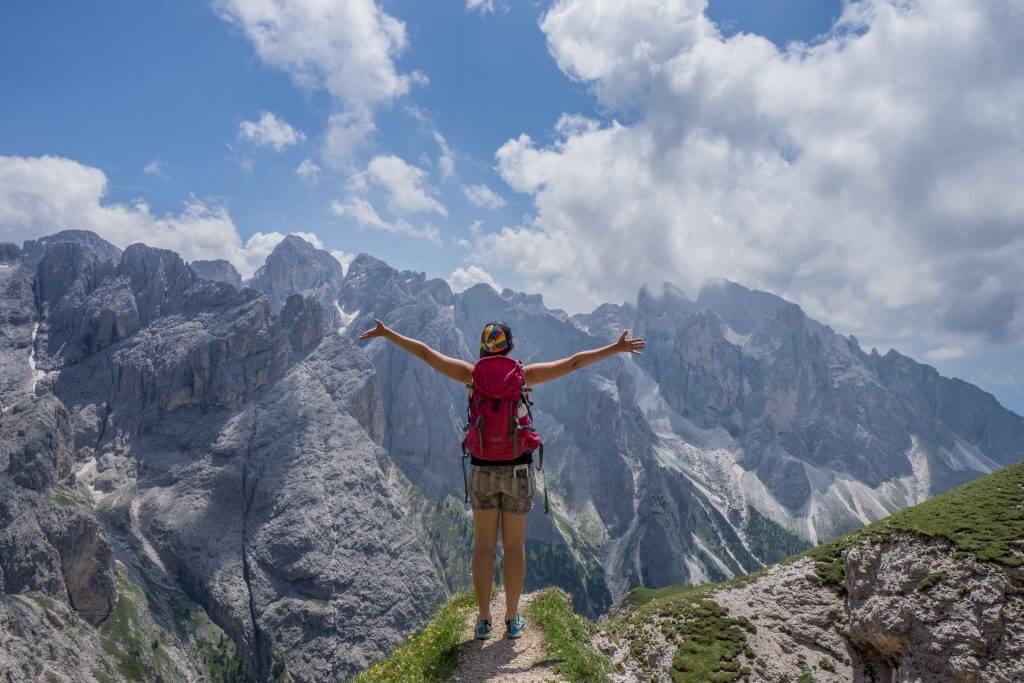
First things first: it’s important to wear the right clothes. Keep in mind that what you wear on a hike should first and foremost be comfortable and functional.
There are plenty of stores selling clothing that’s suitable for hiking, but my favorites are Patagonia, REI, and Backcountry.
Shoes
Your shoes will be one of the most important pieces of gear on your trip. Running shoes are appropriate sometimes, but waterproof hiking boots are much better.
Try them on in person, and make sure that you break them in before you take them on a multiday hike. Do a few hikes or take some walks around your neighborhood first. The better they are molded to your feet, the smaller the chance of blisters.
Here are other important things to keep in mind:
- Try on hiking boots at the end of the day, as your feet swell a little during the day, so this is when they will be at their largest.
- Tie your shoes super tight. Tighter! Tighter! The less movement your feet experience in the shoes, the less likely you’ll experience the friction that causes blisters.
- Wear hiking socks. These are more breathable than regular socks, and they will keep your feet dry, which will help prevent painful blisters.
What to Wear Hiking in the Tropics
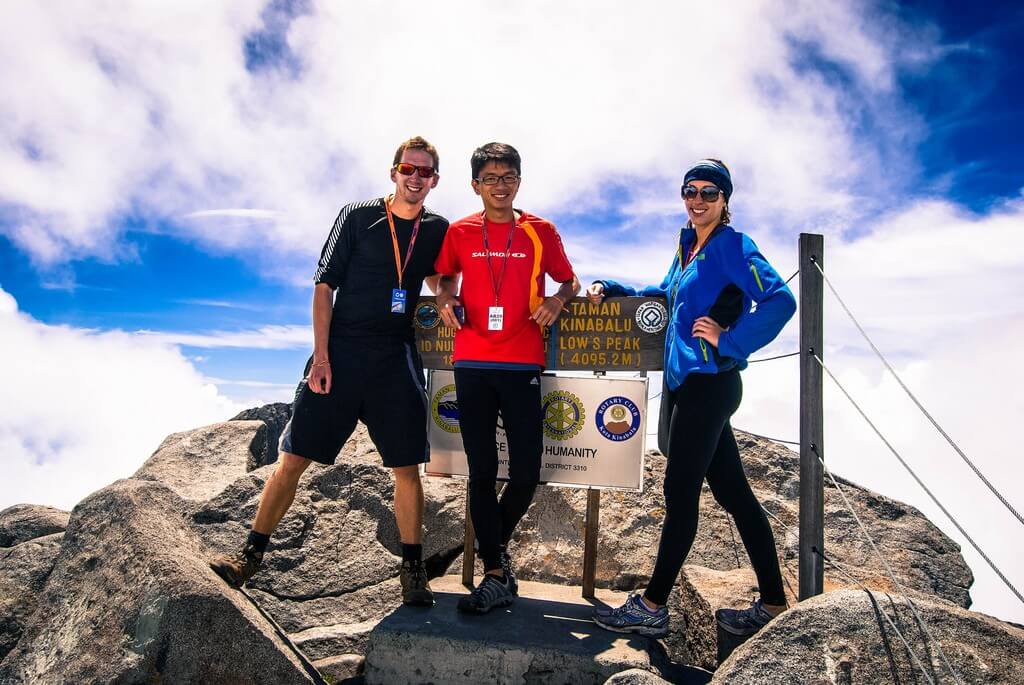
Tropical hikes can get pretty hot and sweaty, so breathable fabrics are your friend, as are layers that you can put on if it rains.
The thickness of what you bring depends on the nature of the hike. Will it be through the jungle? You probably don’t need a jacket, then, but you will want to cover your legs and arms to help combat mosquito bites.
If you are gaining any altitude, bring along an extra layer, because even in tropical climates, going higher means getting colder.
I always bring the following:
- A rain jacket – This is a useful item if you find yourself hiking in the rain; make sure it’s light and breathable.
- Leggings – These are super comfortable to hike with.
- A sports bra that can be worn without a shirt if you get hot (and if it’s culturally appropriate).
- A tank top or thin, long-sleeved shirt that will protect you from mosquito bites.
What to Wear Hiking in Cold Climates
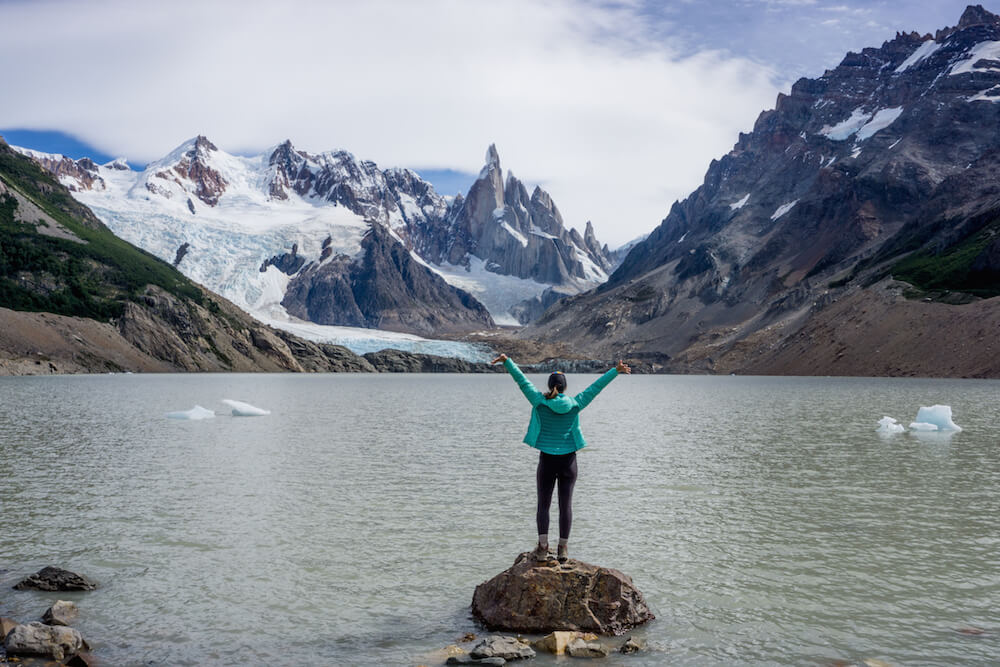
If you’re backpacking in cold weather, it’s critical to wear the right clothing and layer up to stay comfortable. How many layers you will need depends on how cold it will be, but it’s recommended to wear at least four layers in temperatures of 30 to 40 degrees Fahrenheit (around zero degrees Celsius).
Avoid fabrics like cotton and linen, as they don’t provide much warmth; opt for polyester or wool instead, which are great insulators.
I suggest you bring the following:
- A puff jacket – Make sure it’s warm, windproof, and water-resistant.
- A fleece
- Hiking pants
- Thermal underwear
- A beanie
- A buff – You can use this as a mask, bandana, scarf, hairband, etc.
- Warm gloves
What to Wear on A Multiday Backpacking Trip
Brace yourself: This sounds icky, but it’s best to bring just two changes of clothes if you’re on a long trek that requires you to carry everything that you’ll use, including food, a tent, a sleeping bag, etc. I bring a set of clothes to hike in and one to sleep in.
I know that it’s not fun putting sweaty hiking clothes back on in the morning, but there is no point in bringing extra clothing, because within five minutes, your clean clothes will be all sweaty too. Don’t worry, though: everyone is in the same boat. So, two sets of clothing are all you need.
I would, however, bring enough breathable underwear to change regularly, and at least one extra pair of socks just in case.
What to Pack

The most important thing to prioritize when packing backpacking gear is to keep the weight down, especially if you have to carry everything that you’re going to use, like a tent and all of your food.
This is all the sturdy, weather-proof, and reliable equipment that I use:
Camping Tent
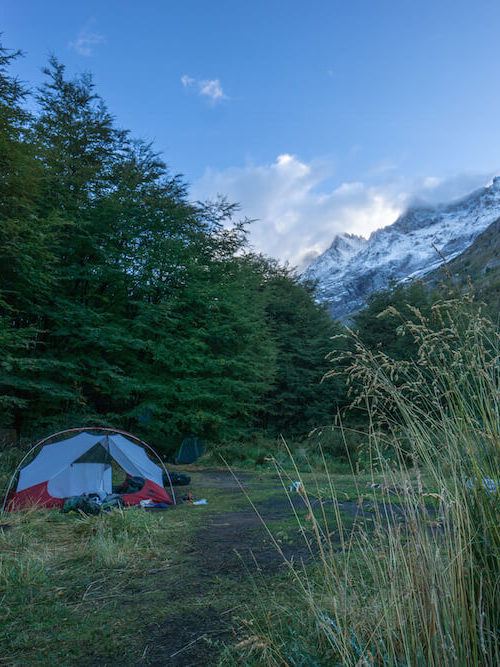
Your tent and sleeping bag are super important, especially in inclement weather. You can definitely scrimp and save when it comes to hiking clothing, but make sure you invest in a good tent that won’t break in heavy winds or rain. The last thing you need midway through a trek is a broken tent!
I use and recommend the following:
- An MSR tent – It’s super lightweight but has sturdy tent poles.
- A sleeping bag that will keep you warm – Note that wearing more clothing in the sleeping bag will not make you warmer. It actually makes the sleeping bag less effective, because the heat then has to go through more layers to reach your body. Invest in a good sleeping bag. Being cold at night is no fun!
- A lightweight but thick sleeping mat
Instead of carrying around a pillow, I suggest balling up your jacket and using it as a pillow instead.
Food
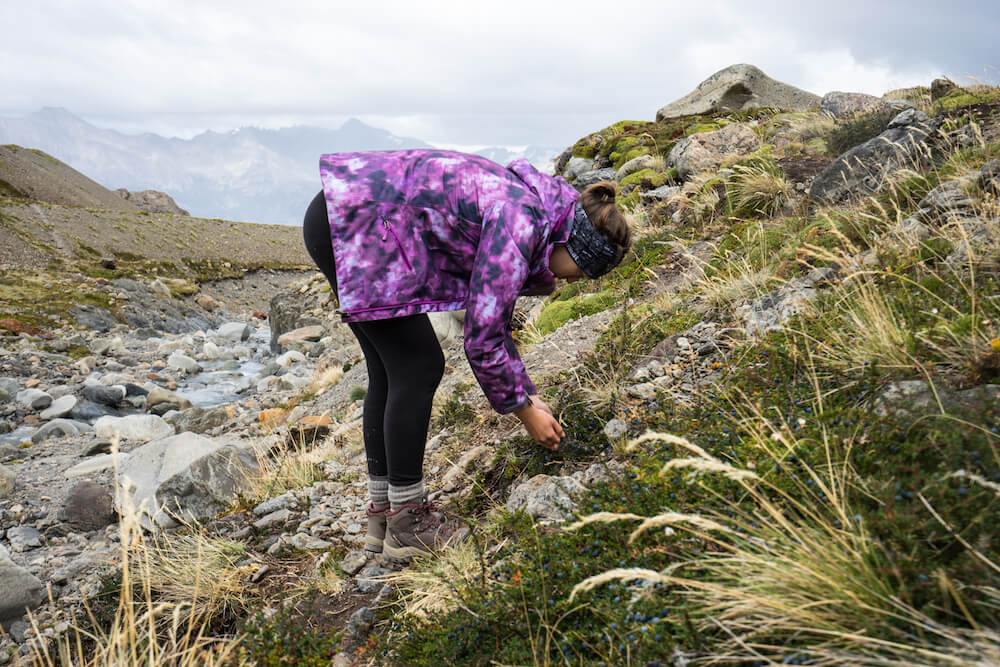
If you’re hiking for multiple days, the key to a light pack is bringing nutritious food that is light and/or can be rehydrated.
Here’s my typical menu:
- Breakfast: Oatmeal/porridge with chocolate powder, milk powder, and dried fruit
- Lunch: Dried fruits and nuts (high in energy, low in weight, and easy to snack on as you go)
- Snack: Chocolate (reward yourself a little), granola bar
- Dinner: Pasta with powdered sauce, couscous, powdered mashed potatoes with a bit of cheese and sausage bits, or a dehydrated meal that you can add water to
- To warm you up: Powdered chocolate for hot chocolate, powdered soup, and tea bags
READ NEXT: A Definitive Ranking of the Best Instant Backpacking Meals
What NOT to bring: Don’t bring canned goods, liquid sauces, or food that takes a long time to cook, such as rice. All of those add unnecessary weight to your pack. Remember, in most cases, you’ll have to pack your trash back out with you, and cans are heavy and bulky.
For cooking:
- A foldable, light pot that doubles as a pasta strainer.
- A foldable stove and fire starter, plus gas canisters – If you’re cooking food that doesn’t take long to cook, bring one canister per three days.
- A good knife and cutlery
Your Pack
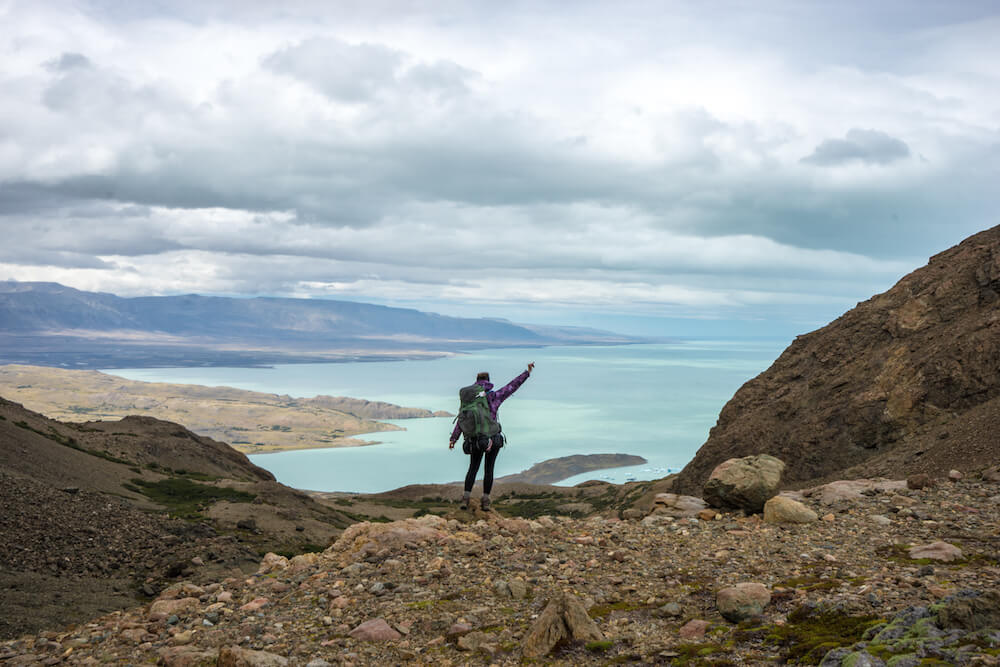
Your pack is one of the most important items you will need.
The best thing you can do is try your pack on in person and make sure that it fits comfortably with weight in it. Stores like REI have dedicated staff just for this purpose. Make sure it fits comfortably around your waist and distributes the weight in such a way that is easy on your back and shoulders.
The size depends on the length of your backpacking trip and how much of your own gear you need. For example, in Nepal, where I stayed and ate in teahouses, I brought a small pack, since I didn’t need a tent or food. In Patagonia for the nine-day circuit in Torres del Paine, however, I brought a 65-liter bag, and it was full, weighing in at about 17 kilos (approx. 37.5 lbs).
Other Essentials
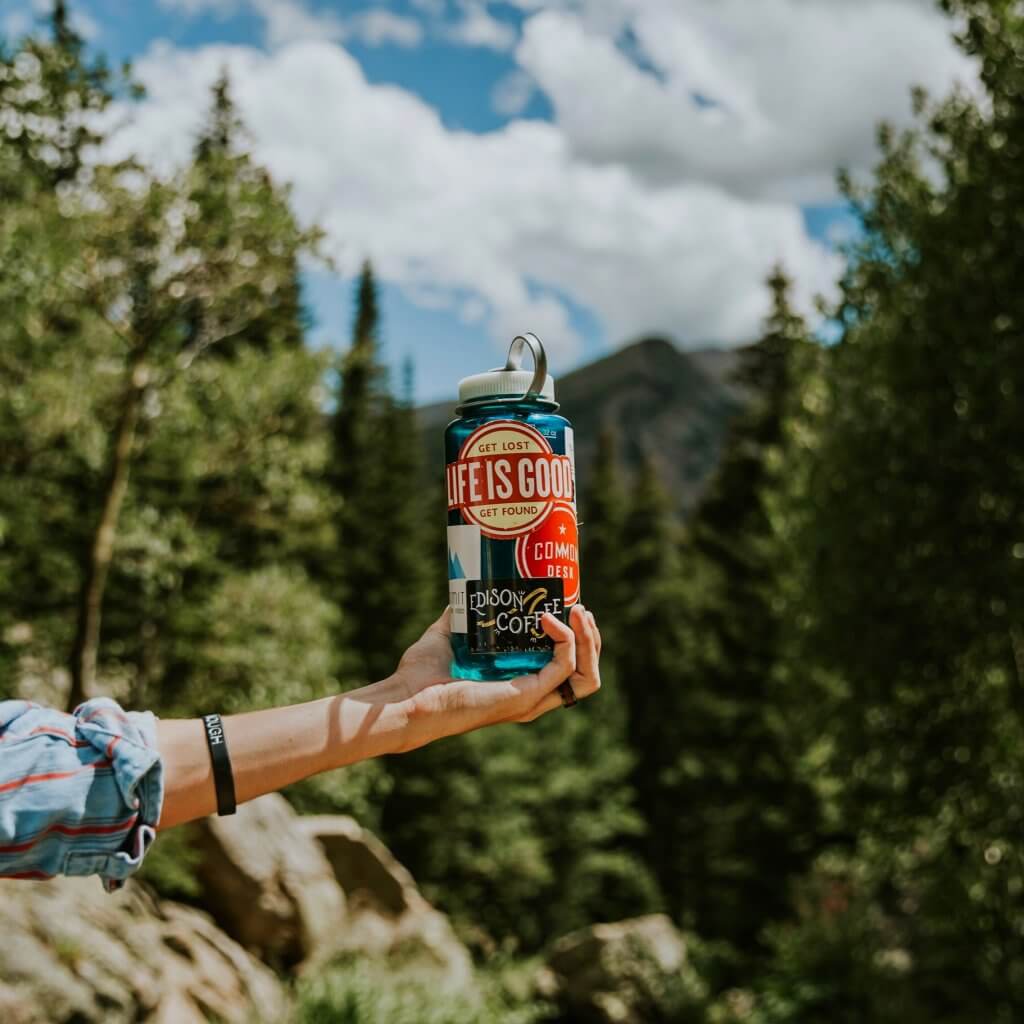
Apart from clothes, shelter, food, and your pack, there’s some other essential gear you will need when backpacking.
I recommend bringing the following items:
- A reusable bottle with water filter – Just because you’re in nature doesn’t mean the water is drinkable. Always sterilize it first.
- Sun protection: I like Sun Bum sunscreen! You can bring a sun hat, lip SPF, and sunglasses too, for extra protection.
- A headlamp, so you can see at night and in the early morning
- A trash bag – Remember to leave no trace and to carry your trash back with you.
- Toilet paper – Put the used paper in your trash bag when you’re done.
- A first-aid kit – You never know what might happen, so it’s better to be prepared. Make sure to bring Compeed too — it’s resilient and a thousand times more effective than Band-aids.
- An offline map with GPS and a waterproof map and compass – These are crucial to navigate.
- Bear spray – This is for if you’re hiking in bear territory, like Yellowstone or Glacier National Park. Bear spray should only be used as a last resort though — try backing away slowly first.
Incidentals That Will Make Your Life Easier
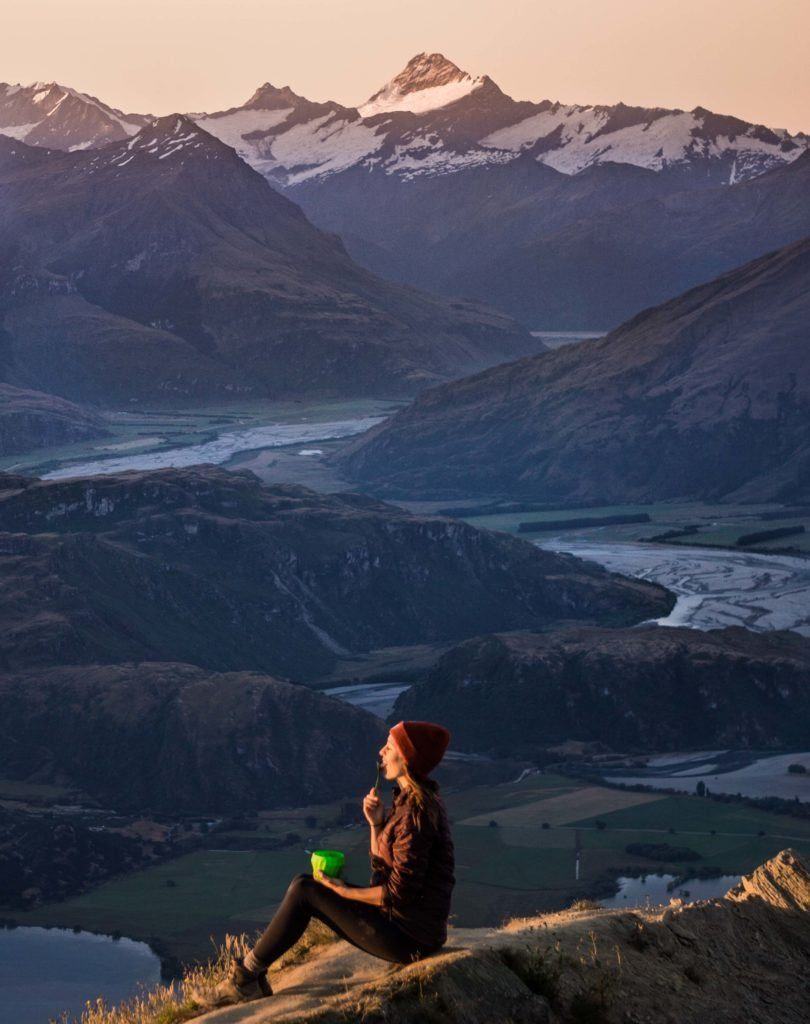
You may need the following backpacking gear too — it depends on where you’re going and how long your trip will be.
- Bug spray – If you’ll encounter mosquitoes, this is so nice to have.
- A portable charger – This is worth its weight in gold if you want to charge your phone.
- Hiking poles – They will save your knees and help with balance. The lighter the weight, the better.
- A quick-dry towel – Showering is nice when possible, so a quick-dry towel may come in handy.
- A hydration bladder – This can be attached to your backpack and will make it easier for you to drink.
- Sandals – You’ll be glad to get out of your hiking shoes when finished for the day, and they can come in handy when showering too.
- Hand sanitizer: It’s not always possible to wash your hands when you’re outdoors, so a travel-size bottle of hand sanitizer can be useful.
- Small tubes of personal toiletries (toothbrush, toothpaste, and menstrual products), but ditch the makeup. Don’t forget to bring prescription medications too if you take any.
Additionally, you might want to bring a camera, drone, and GoPro.
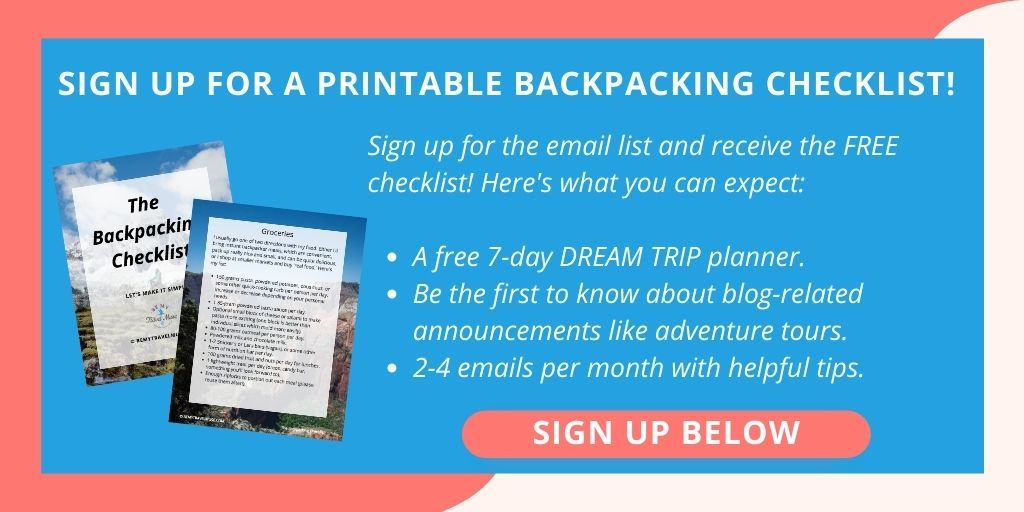
How to Train and Prepare
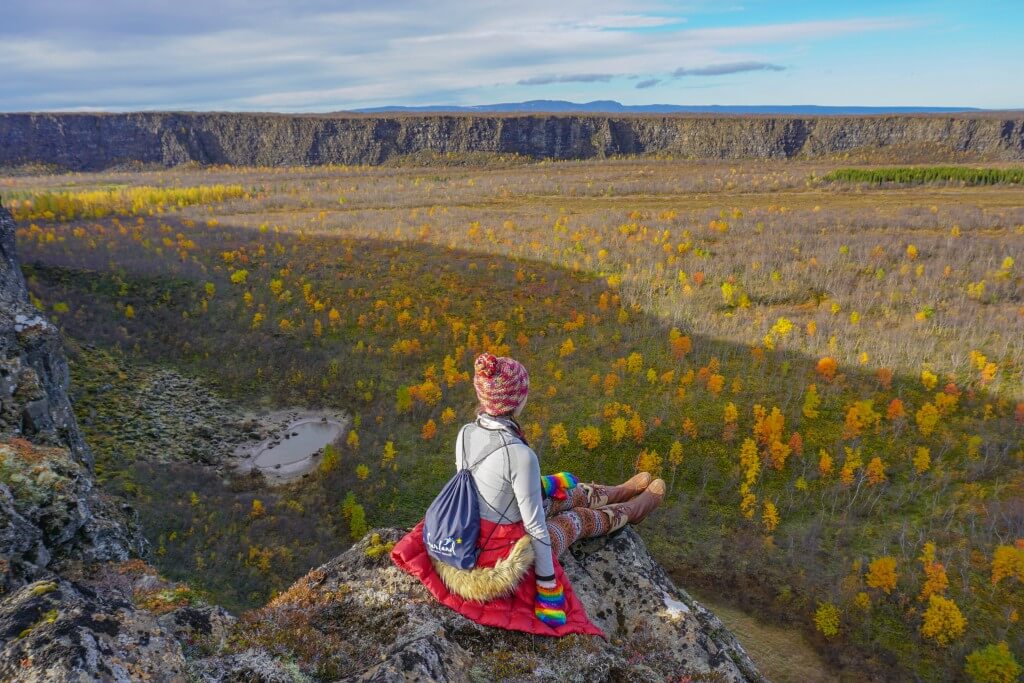
The best way to prepare for hiking is to, well, hike. Like most sports, nothing can prepare you more than doing the real thing, and building up can only help you. Make sure to train with your backpack with weight in it too — it makes a difference!
If you’ll be backpacking at altitude, do your absolute best to get some hiking in before the big trip. If you can’t do that, then get on the stair climber or the stationary bike at the gym and endurance-train. Some other good exercises to increase your strength are crunches, squats, lunges, and push-ups. The stronger you are, the more able you’ll be to climb hills and carry weight.
Most importantly, as I mentioned at the beginning of the article, it’s not about being the most experienced or fittest person on the trail. It’s really about mental endurance more than anything.
As long as you keep up the positivity, you can do it, even if it seems like everyone is faster than you. It doesn’t matter: just honor your pace and body. If you need a 30-second break, take that break, get back up, and keep going.
READ NEXT: The Best Travel Backpacks for Women
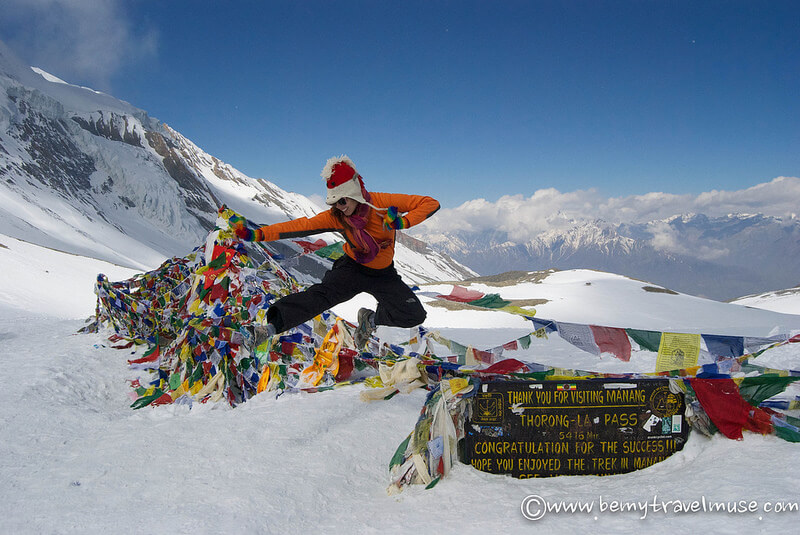
You got this, and it’s going to be a beautiful experience in stunning surroundings! Most importantly, you’ll feel an amazing sense of accomplishment.
I hope this post will help you choose the right gear and prepare for your backpacking trip, no matter if you’re going on an easy, one-day hike in your own backyard or the toughest trek in Patagonia.
READ NEXT:
The Only Backpacking Checklist You’ll Ever Need
9 Things I Wish I Knew Before I Backpacked for the First Time
8 Essential Backpacking Tips for the Hike of a Lifetime
John Miller says
I forgot to bring sunblock on a hiking trip once and had to buy burn cream afterwards. Good thing it was just a single day hike. Your lists are very helpful for new hikers. They wouldn’t have to suffer like I did 🙂
Kristin says
Whoa burn cream?! Gnarly. I always wear a hat too because I want to protect my face, but I haven’t hiked in the North American summer in a while at altitude, where it’s even more important
John Miller says
Doctor said it was just 1st degree but it was really painful. Yep, a hat. Hope I remember that next time
Jenna says
Great Advice, per usual 🙂
Also, just a heads up; your foldable pot link goes to a bandaid link on Amazon….still helpful though 🙂
Kristin says
Oops thanks for the heads up! Fixed!
Rainiero says
Hi Kristin, very useful post 🙂 just a quick one, do you think Merino wool socks would be adequate? I’ve read they’re great since they avoid bad odor, have great water absorption and are good for protecting you from both cold and hot weather, but what about the blisters?
Kristin says
Wool is great especially in cold temps. I just have a hard time with the itchiness but most people are fine with it. If you know you’re fine with wool it’s a good material.
Stephanie says
I also find wool itchy, but I live in SmartWool hiking socks. They took me up mt. Kilimanjaro and back with no blisters, and no itching. Of course my toenails fell off but that wasn’t the socks’ fault! I wear running socks underneath for a double layer.
Kristin says
Oh yikes I guess the shoes were too tight?
L Dan Baker says
Please double check your link to socks. You have recommended cotton socks which are just not the right thing for hiking good quality wool is the or an equivalent synthetic is the only way to go. This is actually a very big deal please double check this.
Kristin says
Thanks Dan. I’m allergic to wool and find it miserably itchy so I don’t wear it.
Damian says
Great article! Keep in mind, a lot of us that read your stuff and your advice are guys. Don’t leave us out!
Kristin says
Sure thing, Damian. The whole post except for the packing lists applies to men as well as women. I’m just not a dude so the clothes I wear are women’s and I don’t like to suggest what I haven’t personally tried 🙂
luxurybackpacking | Emma says
These are really great tips! And perfect for first time backpackers, wish I knew this when I first started! Will be sharing it with my friends who are travelling and backpacking for the first time in 2017!
Amy says
Excellent post! Very detailed! I will be backpacking with my friends this summer and it’s going to be my first time. Any tips for buying food to take on a hike when you’re abroad?
Kristin says
I was able to find powdered milk, dried fruit, nuts, and oats in Patagonia when I went, and it should be very easy in Europe too. Anything dried that you can just hydrate is great, so in much of Asia that would probably be noodle soup.
Aaron C. says
Having gone backpacking with my uncle it’s showed me the importance of having someone who is a veteran go with you for your first adventure. But it is always good to read blogs to prepare too! Thanks for writing!
Kristin says
Yep having a teacher helps for sure!
Pat Gioko says
Good read this one. I also read somewhere that exercising on an inclined treadmill with your pack on helps your body get ready for hiking. How true this is, I do not know.
Kristin says
I could see that being helpful in lieu of going out and hiking in the mountains. If you live somewhere flat, you’ve gotta use what’s available to you!